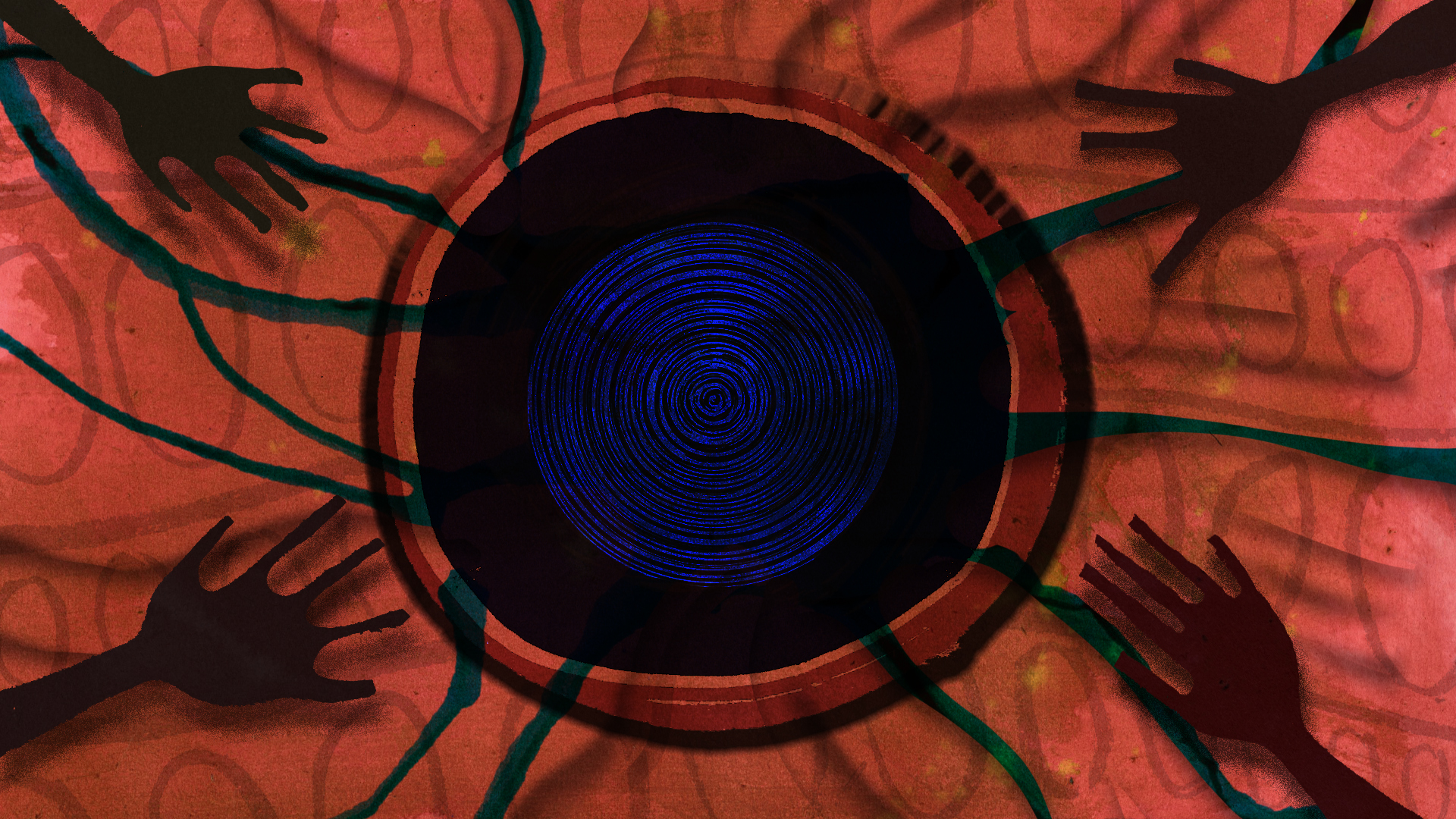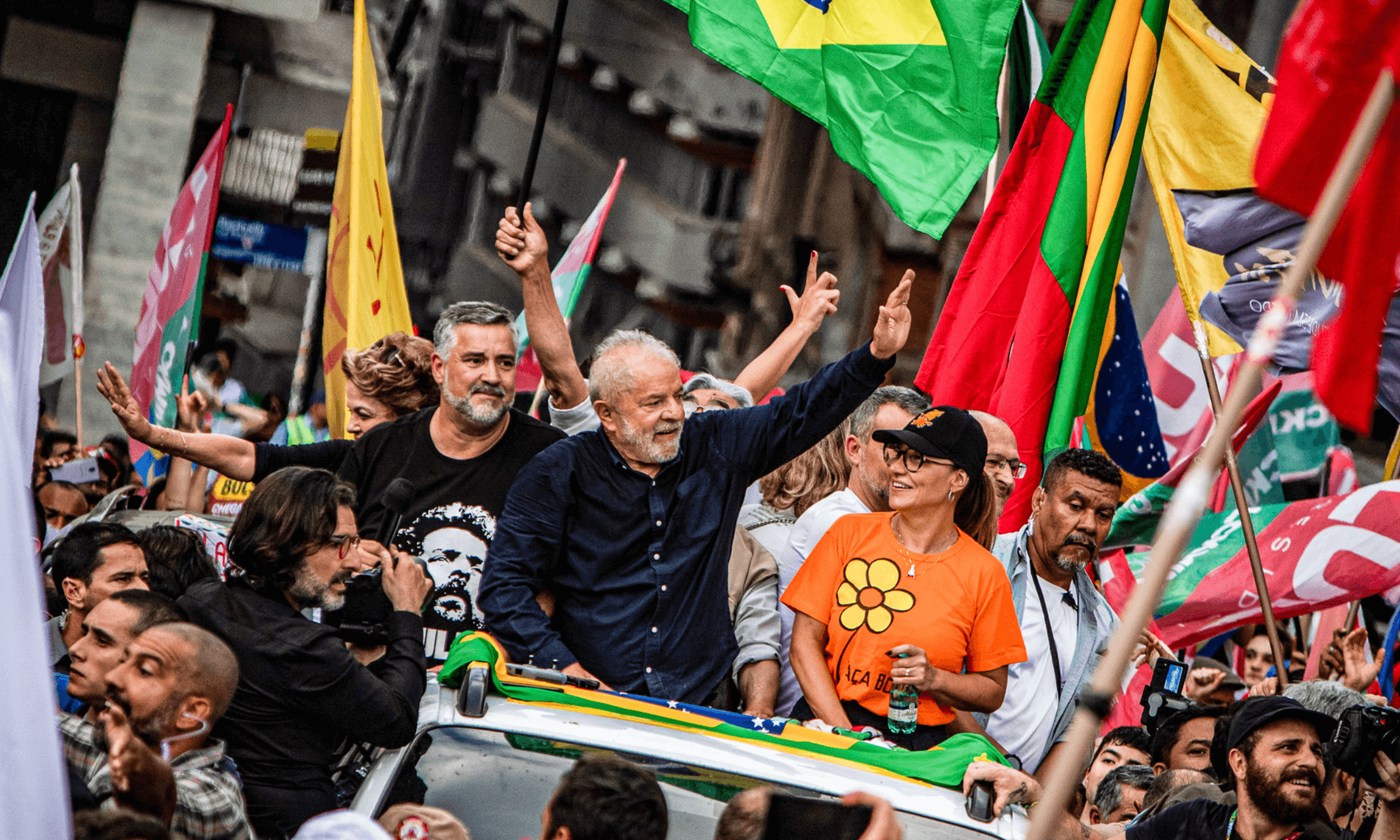
Abdul Majeed Goraya via IRIN photos
As floods batter Pakistan, local organisers are racing against time
While the death toll rises and long-term circumstances of historic flooding in the South Asian country remain unclear, mutual aid organisers are stepping up.
Siri Chilukuri and Editors
10 Sep 2022
Maryam Jamali is tired. She has spent all day trying to coordinate evacuations for people out of Balochistan, Pakistan, where floods have dispossessed some of the poorest people. The 19-year-old helps run the mutual aid organisation, Madat Balochistan (Balochistan Counts), with her mum. She was unsuccessful in evacuating 15 families from the region today and it is obvious how much it weighs on her. Jamali is currently a student in Quetta, the capital of Balochistan, and despite what lies ahead for her, she seems determined to keep working until every request the group receives is fulfilled.
Jamali’s mother originally started Madat Balochistan to find a way to pay for school transportation for girls in rural towns. Now, the grassroots organisation is fielding requests for flood relief. It comprises just the two of them, with Jamali and her mum posting receipts on Google Drive as an accountability system. The district Jamali is from – Jafrabad in Balochistan – is currently completely underwater, and 32 districts in Balochistan have been categorised as ‘calamity-hit’.
“Amid this crisis, mutual aid organisers like Jamali have been stepping up from all over the country”
Amid this crisis, mutual aid organisers like Jamali have been stepping up from all over the country to evacuate people, deliver cooked food, and help process the money coming into the country to help flood victims. “I feel very, very disappointed, very dejected,” she tells gal-dem. “We were trying to evacuate these 15 families, and I was trying all day to get them out. But they ended up being too late. And now they’re stuck.” Jamali is continuing to try to find resources to evacuate these and other families.
Floods have been inundating Pakistan for two months now, and the relentless downpour has not let up. An estimated 33 million people are impacted and over 1,300 people have been killed by the flooding. The climate crisis is the culprit of the unprecedented flooding, caused by an unusually wet monsoon season which has so far dumped three times the average annual rainfall on the country.
Some areas are too difficult to reach
Most of Pakistan’s flooding is concentrated in the southern provinces of Balochistan and Sindh. The hardest hit areas are rural places which have few accessible roadways and are cut off from other parts of the country. “The mobility to reach flood-affected regions is zero, no one can go there. There is no access to those regions, so we are collecting donations and we are trying to do cooked food distributions over there,” says Sadia Baloch, a 21-year-old organiser for Baloch Yakjehti Committee. Since people cannot access these areas, organisers are having to become creative in finding ways to get to the flooded provinces.
Tooba Syed, from Women’s Democratic Front, a socialist feminist group based in Pakistan, says boats have been arranged in places just recently considered deserts. “In some cases, a boat is the only way you can get from one village to another to rescue people,” she says.
Syed explains that the devastation is compounded further by the fact that most people in the affected districts are farmers and rely on crops and livestock for their income. They were strapped for cash before the upcoming harvest season that was meant to replenish their funds. “They lost their food storage, they have lost their crops, which were which they were about to harvest in a month or so. So, you know, it means that they don’t really have anything in the bank account right now.”
Unimaginable loss
The devastation has been unimaginable. “People [are] los[ing] their homes, their shelter, their source of economy, their livestock, their children,” says Baloch. “We are not finding our dead bodies just because of the flood. They’re still missing.”
Countries in South Asia are no stranger to these types of floods, with the memory of the devastating 2010 floods still raw in Pakistan. But every new catastrophe brings its own fresh damage for people to deal with. In this case, the damage for this year’s floods is estimated to exceed $10 billion and currently 600,000 displaced people are in temporary camps. These figures will likely increase as government agencies and other NGOs can gather more comprehensive data. Likely, the full extent of damage won’t be known for some time.
“We are not finding our dead bodies just because of the flood. They’re still missing”
Sadia Baloch
What these figures fail to capture though is the level of human suffering that people in Pakistan will endure on the road to recovery from these floods. Every person who comprises the total number of an internally displaced person or total number of people killed represents a member of a community, a beloved family member and friend.
For Jamali, that connection to tragedy is personal. “It’s not just 75,000 people in this area [that] have been impacted. 33 millions of people in Pakistan are displaced like that. My world is that my grandma’s friends are now homeless. My world is that the kids that I grew up with, they had to migrate to another city,” she tells gal-dem.
Catastrophes that are either caused or exacerbated by the climate crisis often bring untold levels of grief to those impacted. The devastation lingers long after the physical landscape has returned to its ‘normal’ state. The ongoing nature of this crisis is something that no single photo or video of a flooded town can capture.
Limitations of online fundraising
In the past week, organisations of various sizes have been raising funds for flood relief online, but often these have relied on photos and videos of people in extreme distress. “I’ve noticed that with social media, everybody just wants to get the name out, get the pictures, get the likes, the retweets, generate traffic, and you can generate traffic with poverty porn kind of pictures,” Jamali reflects. “And that is completely against the dignity of anyone, but especially, people who have just lost everything.”
It has become common to see such photos circulating throughout a crisis, especially from Global South countries. But what remains to be seen is if those photos are spurring donations and do they help the subjects of the photos recover quicker.
“If you’re educated, you’re going to get help. But if you’re not, then you might not,”
Maryam Jamali
The dynamics of online donations means that raising funds through social media requires its own kind of knowledge and effort separate from the mutual aid organising that people are doing. The only other option is receiving aid from a larger organisation or sending people seeking aid to those organisations, which comes with its own set backs.
But this organiser has also noticed that the way aid distribution works by larger organisations isn’t always equitable. According to Jamali, organisations will pick one person in an area who speaks one of the official languages, in this case English or Urdu, and count on that person to tell them who needs aid. Neither English nor Urdu are the majority languages in Pakistan, so language barriers and education levels can be vital in determining aid packages. “It creates an imbalance. If you’re educated, you’re going to get help. But if you’re not, then you might not,” said Jamali.
Global North is to blame
When it comes to the culprit of the flooding, organisers are clear. Countries in the Global North have plenty of blame to take accountability for.
“I think the countries who are responsible for the emissions of greenhouse gases are the first and foremost to be blamed,” says Syed. “These people [that] have been impacted were the strongest advocates for climate justice, they have known the whole time what is going to happen.”
Baloch notes that in Balochistan in particular, there are little industry or greenhouse gas emitting operations that contribute to the problem, but they are still seeing the disproportionate impacts.
“Pakistan is responsible for less than 1% of greenhouse gas emissions”
Pakistan is responsible for less than 1% of greenhouse gas emissions and yet is projected to face unprecedented water shortages, heatwaves and flooding in the next 30 years. This is yet another example of the inequitable impact of climate change on places that have not contributed towards the problem as much as western nations.
The average carbon footprint of a person living in the UK is 10 tonnes per person versus in Pakistan where that figure is only 1 tonne per person. So much of what is happening now will constitute a new normal of climate inequity and destruction if urgent climate action is not taken.
“Climate change in Pakistan is only going to get worse. It’s going to happen again next year. And then the next year and next year. The amount of suffering where we’re about to witness is just exponentially going to increase,” says Ayisha Siddiqa, a US-based climate activist and co-founder of #PollutersOut, a coalition to kick fossil fuel companies out of influential institutions.
For Siddiqa, this is personal since her family’s village has been destroyed by the floods. “I am watching not just my country, but my village completely flooded. And by village, I mean the places my family and I have walked in. Our crops are destroyed. They will not recover for 20 years.”
Madat Balochistan, Baloch Yakjenti Committee, and Women’s Democratic Fund are all accepting donations for flood relief. All organisations are included in this document which contains vetted places to donate for Flood Relief.
Our journalism relies on the crucial support of a community of gal-dem members. We would not be able to continue to hold truth to power in this industry without them, and you can support us from £5 per month – less than a weekly coffee.
Our members get exclusive access to events, discounts from independent brands, newsletters from our editors, quarterly gifts, print magazines, and so much more.

Britain’s policing was built on racism. Abolition is unavoidable

How Pakistan’s Khwaja Sira and transgender communities are fearing and fighting for their futures

Their anti-rape performance went viral globally. Now what?






